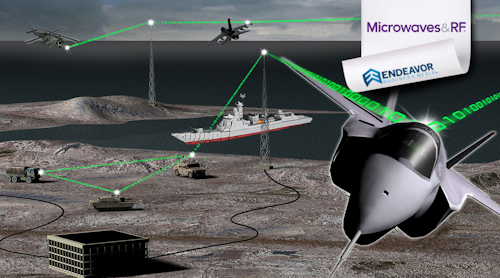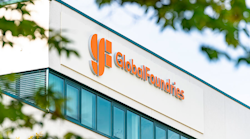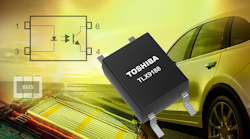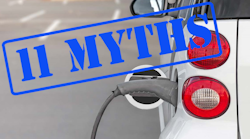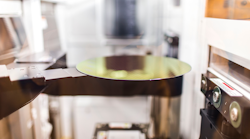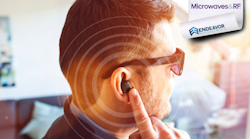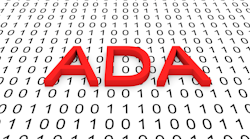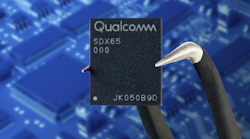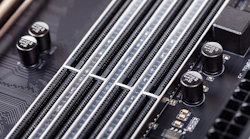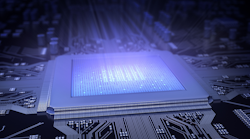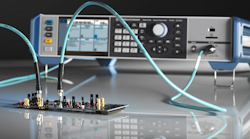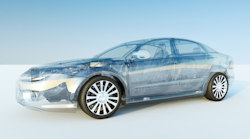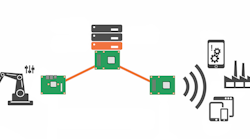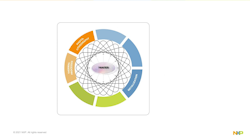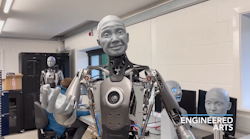Download this article in PDF format.
E-paper displays have been around for some time now, made famous by ebook readers such as the Amazon Kindle, Barnes & Noble Nook, and the various Kobo models. E-paper displays are also increasingly appearing in other devices, including shop shelf tags, shipping labels, watches, signs and even smartphone cases.
But despite the fact that many people see or use these displays on a daily basis, lots of myths and misconceptions revolve around the technology. Here, we look at 11 of these to help you understand why e-paper is becoming such a popular choice for product designers who want to include displays, but have very limited power budgets.
1. An e-paper display only uses slightly less power than a same-size TFT LCD.
尽管这种说法可能是正确的在某些情况下s, if e-paper is used to its strengths—i.e., for displays that are updated relatively infrequently—it will use considerably less power than a same-sized TFT LCD. This is because it only consumes power when you change what’s on the display. Once an image is visible, e-paper requires no power to keep it there.
To understand just how big a difference we’re talking about, imagine a two-inch screen that needs to display information constantly, and update that information six times per day. A TFT LCD needs to refresh around 50 times per second (or 4,320,000 times per day) regardless of whether the image it’s displaying remains the same or is changing. At 30 mA × 0.02 seconds per refresh × 4,320,000 refreshes per day, this gives a daily power consumption of 2,592,000 mA, or 720 mAh.
By contrast, an e-paper display will use around 3 mA for 2 seconds each time it updates its contents, giving a total use of 36 mA or 0.012 mAh per day. Put another way, in this typical e-paper use case, the display consumes just 0.008% of the power that a same-sized TFT LCD would require in a day.
2. Even though e-paper uses relatively little power, devices with e-paper displays still typically require a battery change every 12 months.
If this were true, it would create a significant logistical headache for anyone operating large numbers of battery-powered e-paper kit, such as tags or labels. Happily, in most cases, an annual battery change is highly unlikely.
Granted, exactly how long the battery in a tag or label will last depends on a range of factors: type of battery used, how often the display is updated, how that information is sent to the tag or label, and what other components it contains.
But to illustrate how small a proportion of power the e-paper display in such a tag or label would use, take the daily use figure from the above example. At 0.012 mAh per day, annual usage would be around 3.65 mAh. When you consider that a CR2032 coin-cell battery, a popular choice for such applications, has a stated capacity of some 220 mAh, it’s clear the display isn’t going to make significant inroads into this in 12 months.
Even when you take the other components into account, as well as a small amount of leakage from the battery, most shelf labels on the market today are designed to last for up to five years without changing the battery.
3. When the battery runs out, you lose what’s shown on an e-paper display.
Unlike traditional TFT LCDs, which require a constant power source to display anything, once an e-paper display is showing an image, it will remain there and consume no power. In other words, even if you remove the power source, whatever is on the display will remain visible.
That’s because e-paper utilizes “bistable technology.” E-paper “pixels” are, in fact, tiny capsules that contain negatively charged black particles and positively charged white ones. By applying positive charge to the top of a capsule and negative to the bottom, you draw the black particles into view and pull the white ones out of sight, thereby creating the dark areas on your screen. Conversely, a negative charge to the top and positive on the bottom makes the white particles visible to the eye, producing a clear area. Crucially, once the particles are in position, they’ll remain there until an opposing charge is applied to move them.
4. Many existing barcode or QR-code scanners can’t read an e-paper display.
When you display a barcode on an LCD, not all scanners can read it. Ask anyone who’s tried to scan a voucher or loyalty card barcode displayed on their smartphone screen at a self-checkout system—it often doesn’t work.
As a result, there’s a misconception that barcodes or QR codes shown on e-paper displays will produce the same result. In fact, the way e-paper technology creates an image is fundamentally different from LCDs, meaning the majority of existing scanners can read barcodes and QR codes shown on an e-paper display.
E-paper displays create a visible image by reflecting ambient light off the white particles (and not reflecting it off the black ones), in exactly the same way that a printed barcode is visible to the eye or a scanner. LCDs, by contrast, aren’t reflective. They work by passing light through a layer of liquid crystal, so certain types of scanner may not be able to determine the difference between areas our eyes perceive as dark and light.
5. E-paper isn’t readable in sunlight.
LCDs become virtually unreadable in bright sunlight, because the backlight, designed to make the image in the liquid crystal visible, can’t compete with the brightness of the sun.
相反,电子纸显示器仍然完全usable in the sun because they’re reflective. The image on the display remains visible in sunlight exactly like printed ink on paper: The dark areas absorb the sunlight and the light areas reflect it, thereby creating a visible image.
This is one of the reasons why e-readers are so popular among sun-seeking holidaymakers.
6. You have to be directly in front of an e-paper display to be able to read it.
The reflective nature of e-paper means it actually offers viewing angles close to 180° in some cases. So even if you’re not able to get your eye directly in front of an e-paper display, you should still be able to read its contents.
7. E-paper will only work at room temperature.
大多数电子板起设计用于感情n 0° and 50°C, meaning they’re not limited to “room temperature” use cases. Indeed, there are so-called wide-temperature panels, such as the A-MA product line, that can be used in temperatures as low as –25°C.
8. Updating one part of the e-paper display requires a refresh of the full display.
Traditionally, updating the image on an e-paper display required its entire contents to be refreshed. This is why you get the full-screen “blink” effect with many e-readers when you “turn the page” of your book.
However, newpartial update technology, which can be used with existing e-paper displays, means it’s now possible to update parts of an e-paper display, while leaving the remainder of its contents unchanged. The technology offers a triple advantage: it takes only around a quarter of the time of a full refresh, consumes less power, and improves the user experience.
9. E-paper displays are all black and white.
While the vast majority of e-paper displays are two-tone black and white panels, the technology is developing fast, and tri-color models that include red pigment are now readily available. These include Pervasive Displays’ Spectra panels, which come in2.87-inchand4.2-inchvariants(see figure).
Shown are examples of Pervasive Displays’ black, white, and red Spectra displays.
Panels capable of displaying yellow, in addition to black, white and red, are also being developed.
10. E-paper displays are only available as build-to-order, customized products that you have to buy in volume.
Some people may be put off experimenting with e-paper in their product designs because they believe display panels are only available as customized products, meaning a long lead time, high cost, and/or the requirement to buy in bulk.
In fact, plenty of e-paper display panels are available off-the-shelf, including the 1.4- to 10.2 inchPervasive Displays range. Product designers can buy in any quantity—even single units—and have the e-paper displays in their hands within days.
11. You can’t make an e-paper touchscreen.
E-paper displays don’t have to be read-only. By incorporating appropriate technology, they can be used as interactive touchscreens. For example, product makers have added capacitive sensors on top of their e-paper displays to provide single finger, multi-finger, and gesture control of the device. Other devices combine e-paper with resistive touch panels, or work with a special stylus.
As a result, product designers can enjoy the benefits of e-paper, while offering their users the intuitive touch experience that they’ve come to expect from their smartphones, tablets, watches, and PCs.


